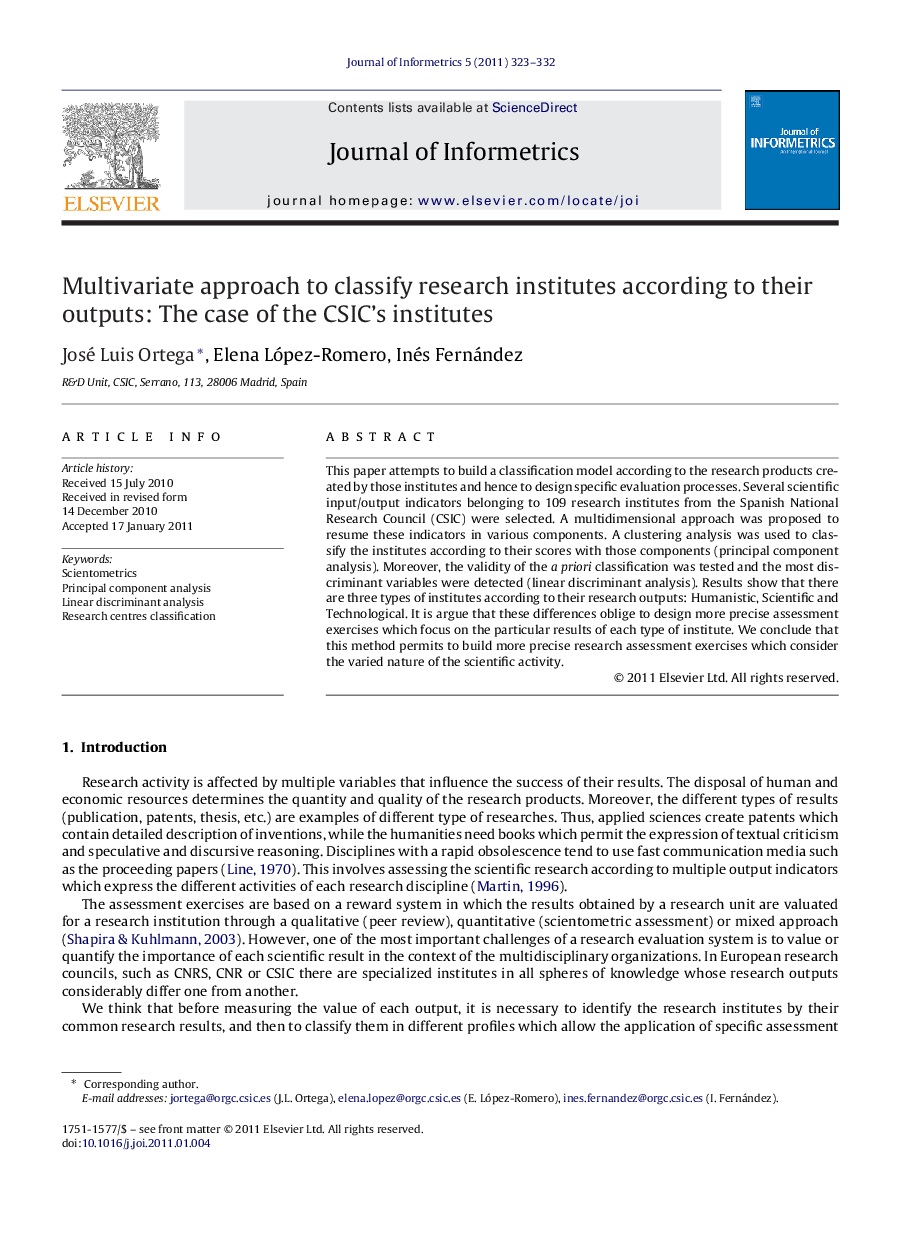| Article ID | Journal | Published Year | Pages | File Type |
|---|---|---|---|---|
| 524060 | Journal of Informetrics | 2011 | 10 Pages |
This paper attempts to build a classification model according to the research products created by those institutes and hence to design specific evaluation processes. Several scientific input/output indicators belonging to 109 research institutes from the Spanish National Research Council (CSIC) were selected. A multidimensional approach was proposed to resume these indicators in various components. A clustering analysis was used to classify the institutes according to their scores with those components (principal component analysis). Moreover, the validity of the a priori classification was tested and the most discriminant variables were detected (linear discriminant analysis). Results show that there are three types of institutes according to their research outputs: Humanistic, Scientific and Technological. It is argue that these differences oblige to design more precise assessment exercises which focus on the particular results of each type of institute. We conclude that this method permits to build more precise research assessment exercises which consider the varied nature of the scientific activity.
Research highlights► The PCA is a suitable tool to reduce R&D activity indicators to different components. ► The LDA can validate the a priori classes and to identify the significant variables. ► These statistics allow us to characterize research units by their research outputs. ► Three types of research units were found: Humanistic, Scientific and Technological. ► This method improves evaluations due to the varied nature of the research activity.
